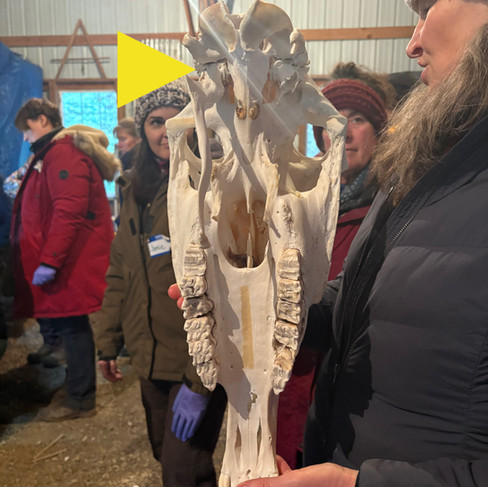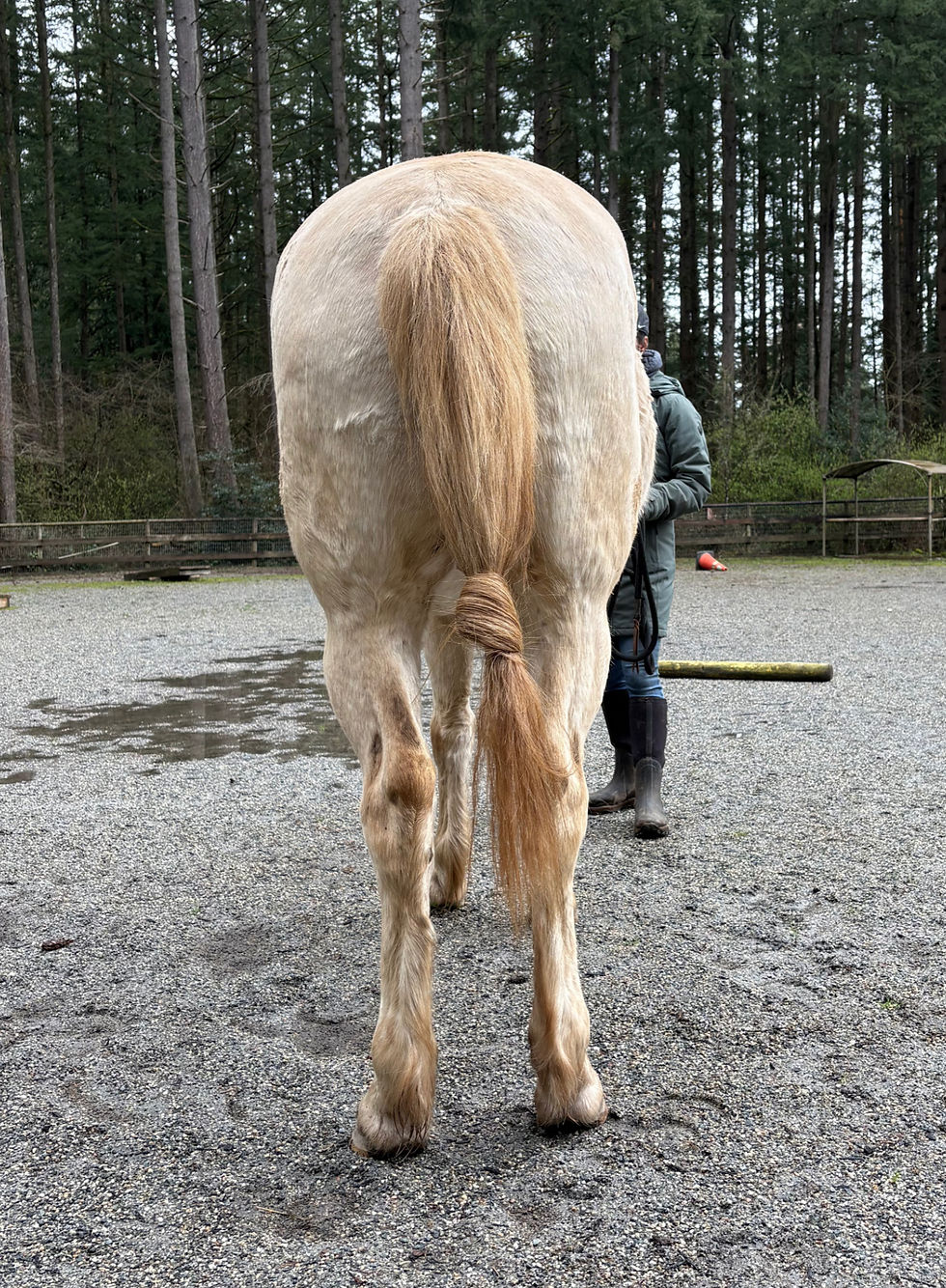Temporo-Hyoid Osteoarthropathy (THO): The Pain You Can’t See
- Elisse Miki

- Jun 1
- 3 min read
During a dissection hosted at the Northwest School of Animal Massage (NWSAM) in collaboration with Trinity Equine Services, we had the opportunity to see something deeply confronting: a cadaver horse cranium with severe Temporo-Hyoid Osteoarthropathy (THO)—a painful, progressive, and often overlooked condition.
The damage to this horse’s skull was extensive and unmistakable.
But what was most haunting was this: if they hadn’t found this composted cranium we might never have known.
This blog is a call to pay closer attention—to stop dismissing pain as personality, and to look deeper into the “behaviours” our horses show us every day.
What Is THO?
Temporo-Hyoid Osteoarthropathy (THO) is a degenerative disease affecting the temporo-hyoid joint, where the stylohyoid bone (part of the hyoid apparatus) connects to the temporal bone of the skull.
This joint plays a crucial role in the mobility of the hyoid apparatus, which in turn supports vital functions such as tongue movement, swallowing, chewing, and poll mobility.
Over time, due to chronic stress (think dental balance, excessive or imbalanced bit pressure), unresolved inflammation, infection (often from otitis media/interna), or mechanical strain, the joint can become arthritic and eventually fuse.
In severe cases, like the one we found, the hyoid apparatus becomes completely immobile, locking into the base of the skull.
This immobility disrupts not only basic functions like swallowing but also the entire biomechanical chain of the head, neck, and forelimb. Without hyoid movement, there can be no healthy tongue action, no true softness at the poll, and no functional forelimb suspension as many muscles that travel into the forelimb also orginate from the hyoid bone.

For comparsions sake, here is a side by side of a "normal" cranium versus a "THO" cranium.

Clinical Signs of THO
The symptoms of THO are often subtle—until they aren’t. Many horses present early warning signs, but these are frequently mistaken for training issues or temperament problems.
Clinical signs may include:
Bit aversion or refusal to accept contact
Head shaking, tilting, or twitching
Resistance to bending or turning one direction
Gait abnormalities, stumbling, or forelimb lameness
Pelvic or spinal imbalances (compensatory patterns)
Tongue tension or ongoing dental issues
Ear sensitivity, head shyness, or bridle resistance
Ataxia, incoordination, or facial nerve paralysis in advanced cases
Each of these signs reflects a body in distress. When we overlook or correct the behaviour instead of investigating the root cause, we risk allowing pain to go unrecognized and untreated.
Understanding the Pain
Imagine the experience for this horse: every time they moved their tongue, tried to chew, or flexed at the poll, pain radiated through their skull. There is no soft tissue buffering this joint—just bone on bone.
And yet, how often are horses labeled as “naughty,” “difficult,” or “overreactive” simply for showing aversive behaviours under saddle or during handling? When a horse flinches during bridling or braces against turning, they’re not misbehaving—they're communicating.
Why It Matters: The Hyoid-Bit Connection
The hyoid apparatus anchors the tongue—and the tongue is directly affected by bit pressure. If the temporo-hyoid joint is rigid or fused, the entire chain of motion is compromised. There is no possibility for normal tongue, jaw, poll, or even forelimb mechanics when this joint cannot move.
In essence, a fused hyoid creates a cascade of dysfunction—from poor tongue posture to cervical restriction, altered spinal mobility, and even disrupted limb coordination.
Early Screening: What You Can Do
You don’t need to wait until neurological symptoms appear to start investigating. Early identification and referral are key.
Practitioners can screen for THO by:
Palpating the TMJ and hyoid region for restriction, pain, or asymmetry
Observing facial symmetry, particularly nostril and lip tension (often resembling a human-like “smirk”)
Assessing jaw, tongue, and poll mobility
Listening to the horse’s feedback during bit or rein pressure—resistance is often the first clue
Watching for asymmetries in ear carriage, chewing, and eye expression
If you notice any of these signs—don’t dismiss them. Investigate. Refer out. Reassess.
Get curious, not corrective.
Because beneath every “problem horse” is a body doing its best to cope with what it's been handed.
If you found this valuable and want to dive deeper into evidence-based equine anatomy and assessment, subscribe to our mailing list to get updates on upcoming live dissections or enroll in one of our certification programs.














Comments